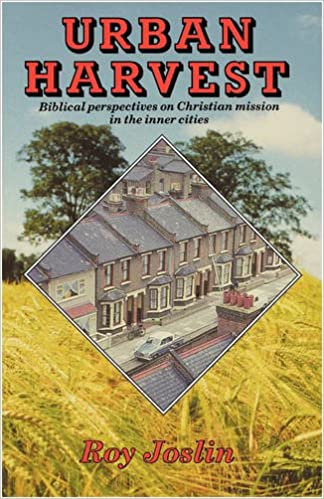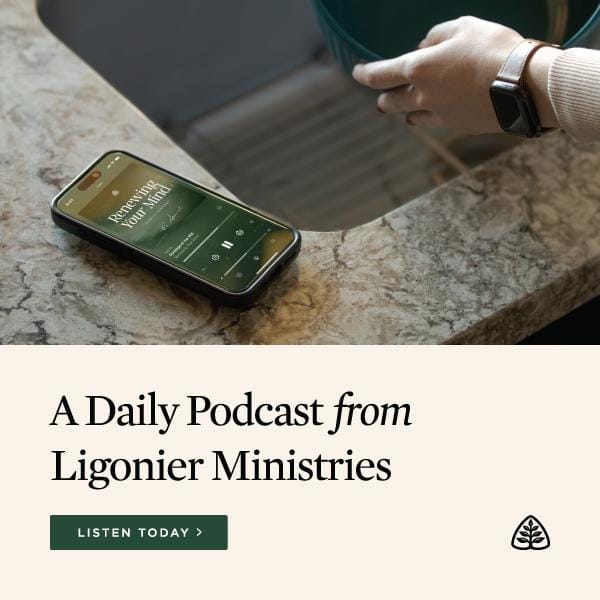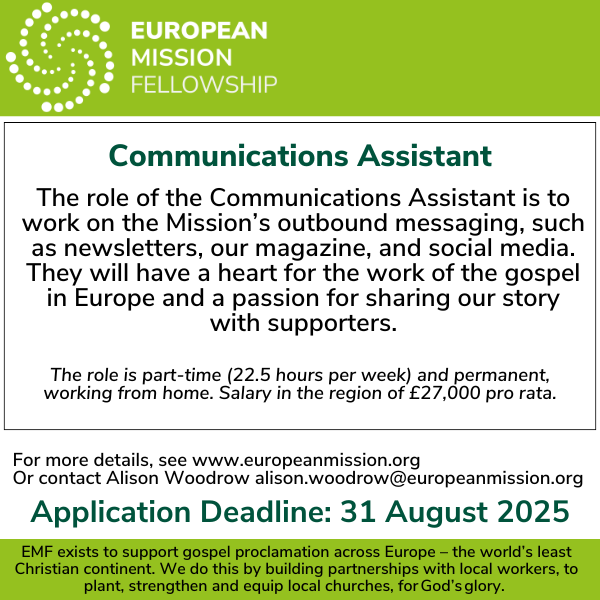It has now been over twenty years since Roy Joslin’s book Urban Harvest was first published. At the time it was acclaimed by some as ground-breaking and incisive in its analysis of the urban church situation.
But others saw it as barking up the wrong tree – urban church life was poor but many had reservations about the book’s analysis. To some it was a ‘gospel of despair’. Who was right?
Roy Joslin, who died in 2004, took up his first and only pastorate in 1963, at East Street Baptist Church, Walworth, South London. At that time Walworth would have been described as a solidly working-class area, populated mainly by indigenous white English people.
Outside the boxes
Roy was a genteel man with a penetrating mind. Methodical to a fault, he was never prepared just to accept evangelical clichés – he did some hard thinking outside our pre-conceived evangelical ‘boxes’.
He was a keen observer of contemporary trends in both church and society. He wanted to apply the light of Scripture to them and find answers to the questions that concerned him.
Why did the gospel make so little impact on the people of Walworth? He knew they were dead in trespasses and sins and that only a regenerative work of the Spirit would bring them to life – but the church had a commission from its Saviour to take the gospel to every creature.
Why, then, were churches so ineffective in reaching the working classes? Why was there so little gospel fruit from the urban landscape in which he laboured?
Evangelical ghettos
One reason was the mass movement of evangelical Christians from city areas to greener pastures (p. 43). This exodus from the urban church led it to its losing influence in inner-city communities. Could this haemorrhage be reversed?
This was one of the concerns that increasingly burdened Roy as his pastorate developed – and that led to the writing of Urban harvest. Few at the time, even within his own fellowship, understood the magnitude of what he was saying.
Many were stuck in evangelical ghettos and blamed the community for its rejection of the gospel. Was not our preaching of the gospel sufficient?
But Roy was convinced that we needed to look deeper into why so many workingclass people were alienated from Christianity. Having given the historical, social and economic background (Chs 1-2) he traced the root of the problem to a failure to understand how the ordinary person thought. It was their mind-set that alienated them.
The church was failing to reach the lost because it was not bridging the gap between the Christian message and the working-man’s thinking.
Un-bridged gulf
Roy identified twelve factors contributing to the un-bridged gulf between church and working community (pp. 21-35). Among them were urbanisation, which divorced working-class people from the church; inflexibility and resistance to change in the church; ‘introverted evangelism’ that confined itself within the safe limits of the church’s own circle; and a failure to tackle social injustice.
The paradigm shift in society and social mobility since Urban harvest was written has perhaps made the label ‘working class’ defunct. However, Roy was describing the mind-set of most ordinary people in modern urban Britain.
In doing so he was reminding the church that to communicate the gospel we must first take into account where people are – we must be on their wavelength if we are to evangelise effectively.
Christian jargon
Roy maintained that gospel communication is ineffective if we use inappropriate language (Ch. 3). Firstly, there is a failure to speak in the language of the common man. Here he makes some helpful comments on the effect of the media on the minds of ordinary people. By failing to note that influence, the church was making her task more difficult.
On the other hand, there was the use of incomprehensible Christian jargon in evangelising. You cannot speak in a foreign language and hope to communicate effectively. John Wesley’s example of speaking ‘plain truth for plain people’ and David Brainerd’s perseverance with the language of the Red Indians (pp. 76-77) were beacons for us to follow.
The key issue for Roy Joslin was the church’s need to reconsider how she should evangelise. We need to get back to both the spirit and practice of New Testament evangelism. He believed that too often we talk about evangelism, whereas the New Testament church did it!
Ten questions
The ten questions he asks about evangelising (p.149) are provocative and searching. Do we use the evangelistic opportunities presented to us? Are we flexible enough to evangelise at times that suit our hearers rather than ourselves? Are we prepared to take risks and seek new territory in evangelism? Are we adaptable enough to suit our style of communicating the message to different situations?
In exploring the best way to evangelise, Roy rejects the idea that all we need is the Spirit (p.107). He acknowledges that we can do nothing without the Holy Spirit – but believes that the Spirit expects us to win souls wisely.
In reviewing accepted ‘evangelistic tools’ he made some startling suggestions. Are Sunday schools the best evangelistic option? Should a church with limited resources expend the bulk of its effort in reaching children? Should it not rather focus on adults?
Should every church have its own youth group, or should we get out and become involved in secular youth clubs? Ought we not to seek out those who will not darken the doors of a church building?
More than preaching
This was in essence Roy’s thrust. He urged the church to get out of its evangelical ghetto and into its community. He was convinced that more could be done evangelistically by the use of small Bible study groups (p.127).
He advocated a ‘Christianity explained’ approach to evangelism. In the 1970s – long before ‘Alpha Courses’ were invented – the church at East Street was using the method of group instruction (Roy called them ‘seeker classes’).
Here the Christian faith was explored with those interested in a relaxed and informal manner. What does it say about our contemporary nonconformity, that evangelical Anglicans have led the way in recent years in pursuing this agenda?
Roy was committed to the primacy of preaching in evangelism but was convinced that more than preaching was needed. Wesley’s Methodist meetings – and the ‘experience meeting’ used by the Calvinistic Methodists in Wales – provide us with a pattern (p.197 ff).
The section on an all-round teaching ministry (p.205), together with Chapter 8 on building an indigenous church, are gold mines of useful comment. They show Roy’s commitment to the welfare of the urban church.
Multi-ethnic communities
Undoubtedly one of the biggest changes to sweep over the urban landscape in the last twenty years has been the evolution of multi-ethnic communities. This is enriching – but how has the church responded to this opportunity?
Roy became convinced that the principles that apply to the working class were valid also for racial groups. The church would have to grapple with issues like ignorance of other cultures; racial discrimination; and worship in a multi-ethnic church.
Perhaps the one thing that shut people’s ears to his call was the way Roy questioned churches with reformed credentials (p.301). He was particularly concerned whether such churches were Reformed in nature, not just in name.
Did they leave enough room in worship services for spiritual spontaneity (p.303)? In other words, were such churches prepared to raise their heads above the parapet of cherished practice to see that flexibility was not the same as compromise?
Is it too harsh to suggest that the rise of so many ‘black churches’ in urban areas is due at least in part to our failure to look over this particular parapet?
Concern for the masses
How successful was Roy Joslin’s call? The fragmentation of Evangelicalism makes a real assessment difficult, but his call has gone largely unheeded within his own constituency.
Roy would be horrified to think that his book might become a text on evangelical theory. His heart’s burden was all about getting out there and meeting needy souls with the gospel of his beloved Saviour.
The stature of the man was that when God called him to walk the path of declining health, he did so without demur – though it meant he would never get the opportunity to put his convictions into practice. He trusted God’s wisdom, will and love.
The legacy of his book is an on-going call to preach Christ to the masses.







